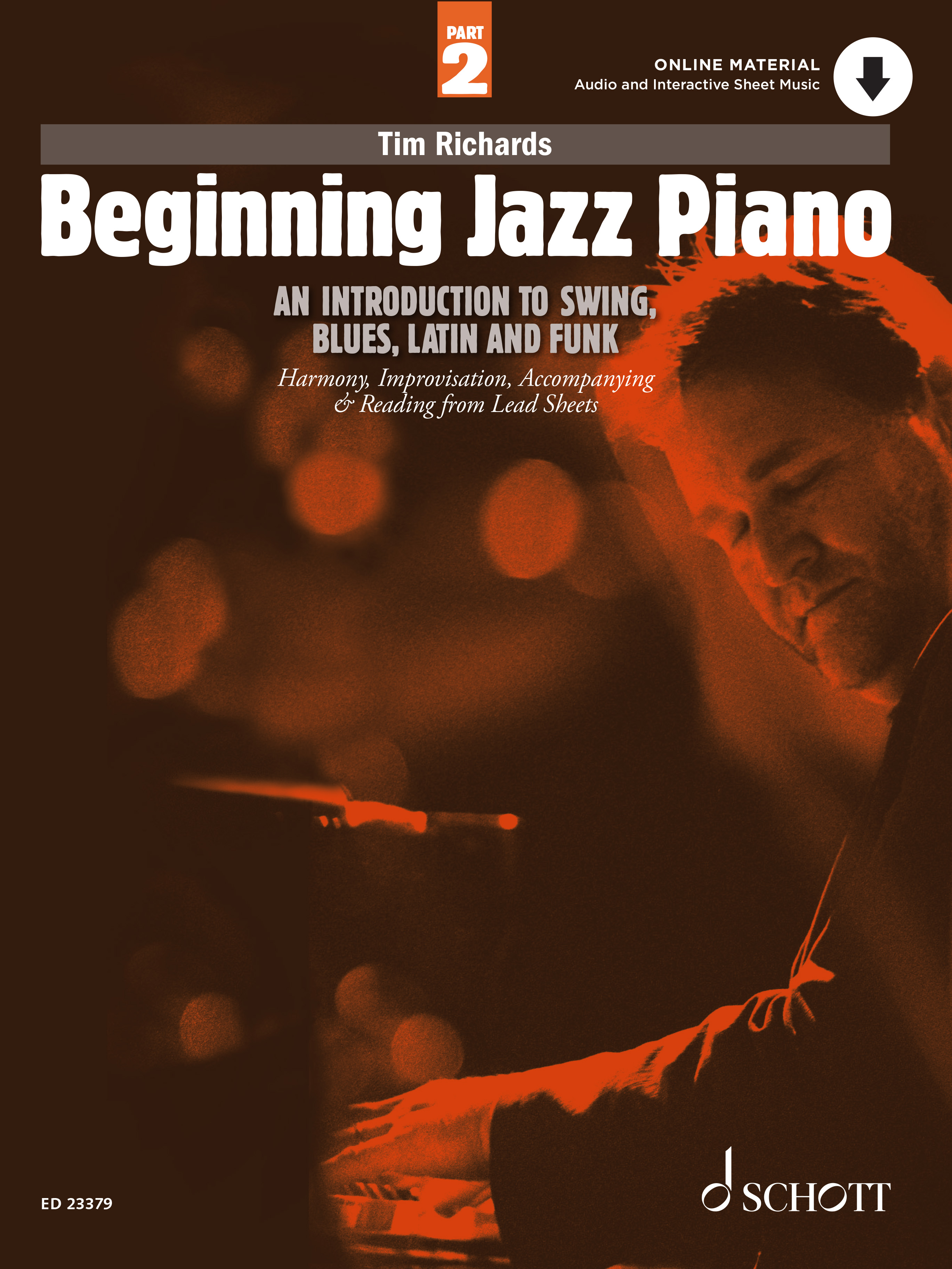
Beginning Jazz Piano Pt 2
The ‘Beginning Jazz Piano’ books are aimed at players with some piano experience who wish to develop a grasp of the basic tools required to play and improvise in a jazz style. Part 2 continues the approach to Harmony and Improvisation begun in Part 1, with some important differences.
Many of the tunes in this volume, unlike the simple one-, two- or three-chord pieces in Part 1, are based on well-known tunes such as Lester Leaps In, Perdido and Lover Man, introducing the reader to longer song-forms such as the 32-bar AABA sequence typical of many jazz standards.
Not only are there more than three chords in these pieces, but they also contain a greater range of chord types. The first chapter explains the difference between the five types of seventh chord in common use and suggests a variety of ways of playing and improvising over them. Common sequences such as I–II–III, II–V–I and I–VI–II–V are dealt with in depth.
This volume also encourages the reader to take more responsibility for the left hand, rather than relying on bass lines given ‘for friend or teacher’ as in Part 1. You’ll be shown how to construct bass lines in various styles, and also how to voice left-hand chords most effectively, using inversions, shells and rootless voicings.
Chapter 2 focuses on Accompanying, an essential skill for anyone playing in a duo situation, or for vocalists wishing to accompany themselves at the piano. Step-by-step instructions are given for creating two-feel, ‘latin’ and walking bass lines, to which right-hand chords can be added in various rhythms. Detailed examples are given using tunes such as All of Me and One-Note Samba, as well as a range of backings suitable for blues, funk and gospel tunes. Don't miss the ‘Iconic Vamps’ Checkpoint, which includes around 20 examples of essential two-handed grooves it’s important to know.
The final topic, Interpreting Lead Sheets, is one of the most important skills demanded of the jazz pianist. It is explored in Chapter 3 via a ‘Lead Sheet Protocol’ that outlines the choices open to you when reading from a fake book comprising melody line and chord symbols only. Examples are given for the tune Indiana, ranging from a simple bass accompaniment in the left hand to a two-handed arrangement in 5-part harmony.
‘Beginning Jazz Piano Part 2’ includes seven originals alongside traditional standards such as St James Infirmary and When the Saints Go Marching In. As in Part 1, audio and backing tracks are downloadable where needed and MUSICGURUS’ interactive sheet music is also provided free, enabling sections to be looped for practice, or tracks to be slowed down as desired.
For those that prefer online learning, both parts are now also available as separate video courses from MUSICGURUS, in which I demonstrate everything in detail personally: musicgurus.com
Whether you decide to get the books or the video course, I hope you find BJP to be a useful introduction, and a prequel to further study with my other SCHOTT publications, such as ‘Exploring Jazz Piano’ Vols 1 and 2.
• Purchase the BEGINNING JAZZ PIANO Part 2 book at Schott Music London
• See also Tim’s Top 10 Tips for Playing Jazz Piano
• Listen to Tim’s PODCASTS on famous jazz pianists at Morley Radio: